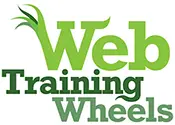Beginners
These tutorials are appropriate for those new to WordPress, or for non-coders.
If you are using Google PageSpeed Insights to test your site, you’ll see this “avoid enormous network payloads” warning if the total size of your page is more than 1.6MB.
It sounds technical, but this is actually one of the recommendations that you as the site owner have the most control over. Unlike some PageSpeed recommendations, you can fix this one!
Read more →
Backing up your WordPress site is a necessity, but it can be hard to find an affordable, easy-to-implement solution that covers all the bases. There are a lot of possibilities out there, but the following have served me well over the years. I usually only have to use them on shared hosting plans. Some of my sites are on managed WordPress hosts who take care of backups as part of the plan.
In this guide I’ll show you how to set up either the BackWPUp plugin, or UpdraftPlus, to back up your site to Dropbox for free.
Read more →
There are many, many ways to sell things from your WordPress site, from physical products to digital downloads or access to content. The best solution will depend on your particular circumstance and needs. While WordPress can get quite sophisticated in the ecommerce department, a lot of folks just want to be able to sell a few items quickly and easily using PayPal.
In scenarios like this where the user wants the simplest possible solution and knows they want to use PayPal, a fully featured shopping cart / ecommerce solution such as WooCommerce might be overkill. Sometimes simple PayPal buttons will suffice.
Read more →
When building their site, many people want a beautiful design, and the ability to customize that design any way they would like.
Navigating the free themes in the WordPress directory can be a bit of a minefield and it’s hard to know what you’re actually getting. So here are 7 of my top picks for free themes that are solid choices with lots of flexibility.
Read more →
The Site Health tool was introduced in WordPress 5.2. It’s designed to give you, the site owner, some valuable information about your site and server performance. It’s also useful in the event you have to contact the support team for your theme or a plugin you’re using.
In this post we’ll have a quick look at this tool and highlight the most important recommendations.
Read more →
Every time a new version of WordPress is released, some people will experience compatibility problems with their sites. These can be minor and easily resolved, or they can be more tricky to diagnose. Either way, especially for non-developers, such problems are a little scary, particularly if they make your website inaccessible or unusable. One way to ease the stress of an upgrade, or to experiment with any changes you may want to make on your site, is to create a sandbox, or testing site. The video in this post shows you how you can easily do that using free tools.
Read more →






